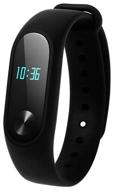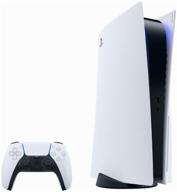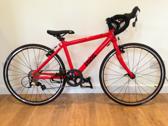
Review on Opti Tekscope Microscope Advanced Definition Industrial by Zack Frazier

Opti-tekscope Digital USB Microscope Camera
This microscope has good magnification but is not strong enough to observe microorganisms in pond water. You can look at the fine print on a dollar bill or look at an object up close beyond what you normally see. There are two good words to describe a microscope/loupe. magnification and resolution. A large increase is useless if the resolution is not sufficient. Think about what you see when you zoom in on a picture taken with a mobile phone. As you zoom in you see more detail, but eventually the detail stops and zooming in further yields nothing of value. What resolution you need depends on what you're looking at. You can enlarge lower resolution text letters and you will still be fine as you can recognize the letters. I was able to confirm the 200x magnification on a 23 inch monitor. But as I said, it's not just about the magnification. You can project the same image onto a 52-inch TV and get extra magnification, but that doesn't mean you see anything further or see any value in the image. I think the 200x magnification is the limit of usefulness. The best way to describe magnification is something we can all see and understand. I used a US dollar bill for this. This camera will magnify George Washington's eye on the one dollar bill to fill the entire viewer. Image included to see maximum magnification with George Washington's eye from one dollar bill. It doesn't matter what size your monitor is, you still get the same image in the viewer's frame. The big screen just has a bigger eye in a bigger frame, but that doesn't mean it shows more detail. This webcam works on any device that supports webcams. You can use any available software that works with webcams. So yes, it works on Linux as well as mobile phones and tablets that support USB cameras. Not all phones or tablets support USB cameras. I tried the Linux Camarama Webcam Viewer software from the Ubuntu software library. It works the same as the Cheese app. It will most likely work with any webcam software since it is just a webcam. This camera also works on my Android Pixel XL phone with an OTG cable. The OTG cable is an inexpensive connector that allows you to convert a micro USB connector to a standard USB connector. This allows you to use a USB flash drive to backup software or images from your phone. You need a connector labeled OTG, it's not just a USB micro USB connector. And of course your phone must support OTG. Many new phones support it. Google Pixel phones and Samsung Note5 support OTG, as do many others. There are a few steps to enable OTG on these phones. Examine the OTG phone and turn it on before attempting to use the camera to avoid disappointment. There are many webcam apps for Android phones, I've tried a few and I liked the endoscope app, but it has low resolution images like 640 x 480. But it's good enough for many things. There are others, try them all if you like. Some of them store much larger images. Resolution: The camera description states that the camera sensor delivers an image size of 1600 x 1200. However, this is not supported by all programs. The Android endoscope app saves 640 x 480 (0.3 MP) images. The Linux Camarama Webcam Viewer software displays the image in 3 different views: small, medium and large. The small image was saved as 160x120. The middle image was saved as 800 x 600. The large image was saved as 1600x1200. CameraFi Android App Can select different video sizes from 640 x 480 to 2048 x 1536, 2592 x 1944 at 10 fps, 1600 x 1200 at 30 frames per second. So the choice of software/application can change the resolution of the saved image. The Linux Camerama application saves files in PNG format. The Android application saved the file in JPG format. The file type is determined by the webcam software, not the camera. So if you need JPG files, look for an app that saves them as JPG. The png file format is probably best for storing enlarged image details. The JPG files are too compressed, which doesn't work when you're trying to capture the details of the enlarged image. The lighting is adjustable, but can be too strong to view shiny objects up close. It is very difficult to look at a diamond because of the glare. You can turn off the light and use outside light, which is better in some cases. For some objects it makes sense to use reflected light or diffusers. The stand is quite stable. It has enough weight to keep the camera steady when turning the focus knob. When all handles on the stand are locked, the camera is stable. It does not move in any direction due to vibration or tilting of the stand. The camera holder has a radial hinge. It can move radially and has no locking but stays in place well. It doesn't move due to small movements, you have to put some pressure on it to make it move. Looks like rubber on a metal handle. Pulling the camera cable quickly can cause the camera to move radially, but this can't happen that easily if you're careful. The stand has two black knobs, one with indented notches. These two knobs are locked together, turning one turns the other. This set of grips raises and lowers your camera on a stand. I first loosened the lock nut and then used the large knobs to move it up and down. It works, but you have to lock the position before removing the handle from the big black handle. Otherwise, the weight of the arm will cause the arm to drop all the way down. Then I found that you can move the large knobs if you tighten the lock nut firmly but not too tightly and the lever doesn't fall off if you take your hand away. This is the way to use the device, it works very well. The camera comes with several attachments. At first I didn't think much about investing. So I decided to take a closer look at them. They are useful for showing certain things. For example, a mount is a piece of plastic that fits over the top of a camera. It doesn't seem to do much good, but it does help you get a closer look at things when you're holding the camera. Given the magnification, it's difficult to hold the camera steady enough to see clearly at higher magnification. Place the plastic tip with the tip on the camera, then place the end of the tip on the table and focus the image. You can then just place the tip on something else to get that subject in focus without using the focus stick or fumbling with your hand to move the camera. It works very well looking up and down the knife blade to see the blade in detail see attached pictures. It also helps to look at your skin, you can just move it across the skin and see it clearly. Without a prefix, this is not easy. There is another attachment that looks like the end of the instrument that your doctor uses to look inside your ear. This part lets you do the same thing, first focus and then put it in your ear, and you'll probably have to fine-tune the focus to see. This part gives you a good view into your ear. Without an image, it's difficult to focus on anything. The other attachment is a long tube I think to look inside what looks like a mouth. These attachments make it much easier to focus on specific things. The last fixture is a 90 degree mirror. This works to look around a corner, like a wall or similar. The camera focuses close, about 5 mm from the subject. This is not an exact measurement, I just raised the ruler to what I felt was the best I could get off a dime. On the other hand, the camera can focus to infinity, allowing you to see the room like a regular webcam. It's nothing special, I don't really see much point in it given the stand. Summary: The camera is good for viewing images up to 200x magnification. The camera is compatible with many third-party programs. I have confirmed that it works on Linux, Android and Windows 10. Two shots taken by a dime, one at 800x600 and the other at 1600x1200. Other images included.
- GOLS certified
- Only available in black
New products
Comments (0)
Top products in 🔭 Binoculars & Scopes
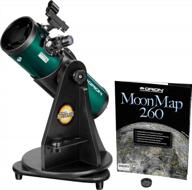
Discover The Wonders Of The Universe With Orion StarBlast 4.5 Telescope In Teal Color

14 Review
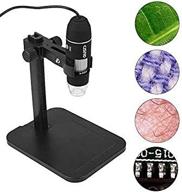
CISNO USB Digital Microscope: 2MP, 1000X Magnification, 8 LED, Windows-Compatible

25 Review

Enhance Your Stargazing Experience With Orion'S Premium Telescope Accessory Kit (1.25-Inch, Silver)

21 Review
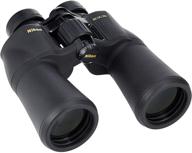
Nikon ACULON A211 8248 10x50 Binoculars (Black)

20 Review




